Entering Chinese fashion couturiere extraordinaire Guo Pei’s Rose Studio on the north side of Beijing is akin to walking into a surreal world of colour, eclecticism and fantasy. Some might call it kitsch, but in the positive sense of the word. Here, Guo Pei and her team create some of the most fantastical, whimsical and dramatic gowns that even Lady Gaga might have trouble carrying off, but for China’s elite, nothing seems to be too much and Guo Pei’s creations are increasingly sought after as statement-making, one-of-a-kind outfits that will rarely be seen more than once...
With the burgeoning wealth in China, fashion designer Guo Pei has clearly reached a certain status at the right time. She has come a long way since her graduation in 1986, after which she took a government job designing children’s clothing which earned her 65 renminbi (US$10) a month, and both Chinese and Western fashionista eyes continue to watch her closely.
Guo Pei was born in Beijing in 1967 at the beginning of the Cultural Revolution as the daughter of an army leader who later was given a position within the state housing authority. In 1982 she enrolled in fashion studies at Beijing Second Light Industry School, a tertiary education centre which at the time had no knowledge of, or access to Western fashion designers or trends. Paris and Milan were still very much foreign territory and the names Christian Dior, Cristóbal Balenciaga and Pierre Balmain were as yet unknown to the Chinese population. In fact, “fashion” altogether was not yet a concept.
Right from the beginning of her career, Guo Pei began creating runway collections that spoke literally, volumes.

Each of the dramatic shows she has staged has been inspired by various themes, the first being entitled ‘Reborn’, the second ‘The Fate of Children’s Dreams‘ and the third, ‘1002 Arabian Nights’ set to Nikolai Rimsky-Korsakov’s Scheherazade and which featured the legendary then 80 year-old supermodel Carmen Dell’ Orefice in the finale. “Guo Pei's designs are the best ambassador for her China,” says Dell’ Orefice of her experience of working with the designer. “She draws from the past, expressing history in her artistry and. She demonstrates through perfecting her craft, a deep understanding of the decades, and the world she lives in today. She is an unparalleled artist of this century.”
Passing through the double door entrance to Rose Studio immediately gives a suggestion of what is to come in terms of outlandishness and decadence as far as what is created here. A grand staircase to the right has what appears to be a metallic winged dragon spiralling upwards, whilst to the left of the staircase there is a large birdcage housing two bright yellow exotic birds and on the floor sits a tiger rug, head fully intact. To the far left is a wall adorned with multi-coloured reams of fabric, accented by baroque style furniture and a seating area. To the right, behind a white filigree panel, Guo Pei holds secret court with her customers, attentively listening to their desires for one of her unique creations.
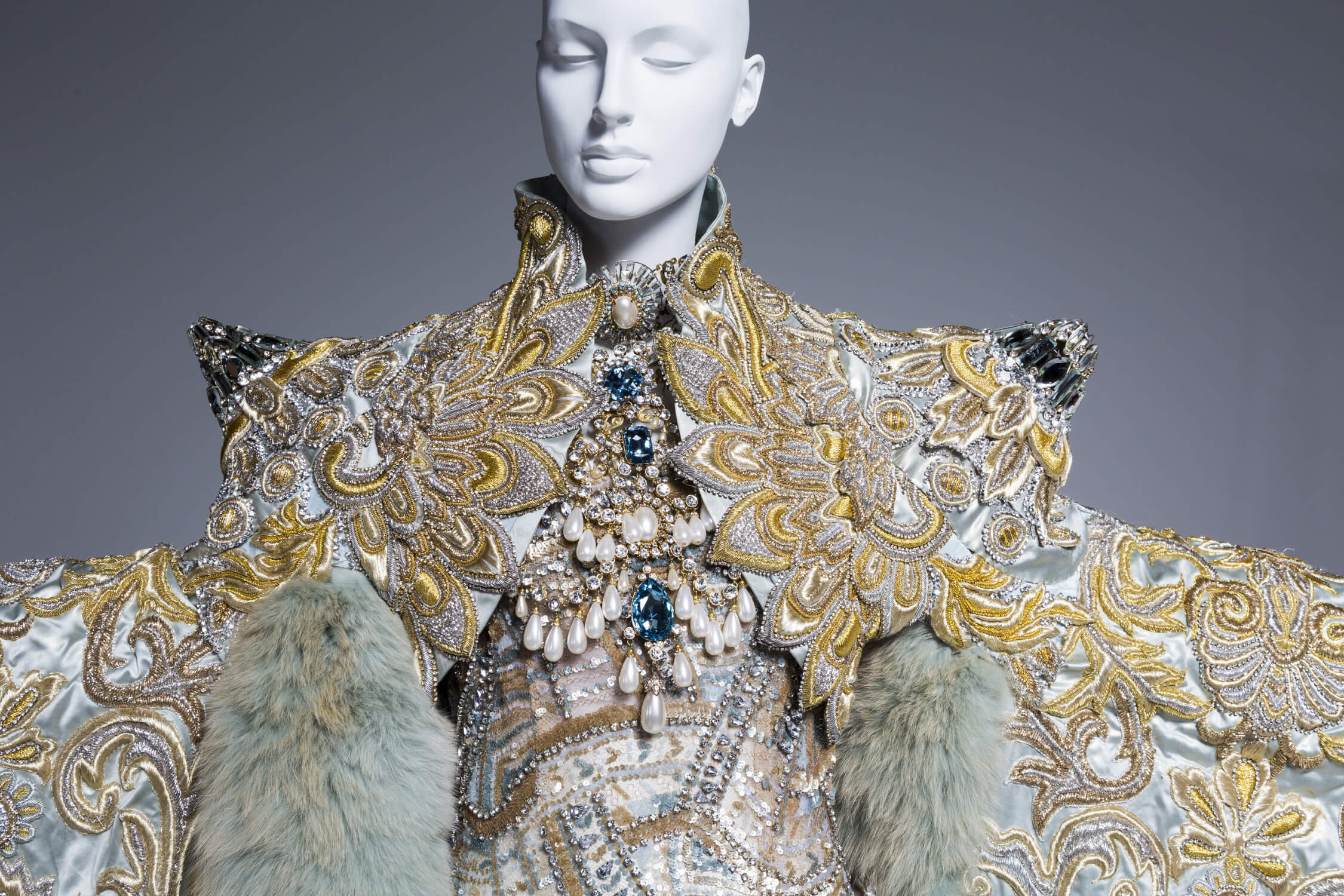
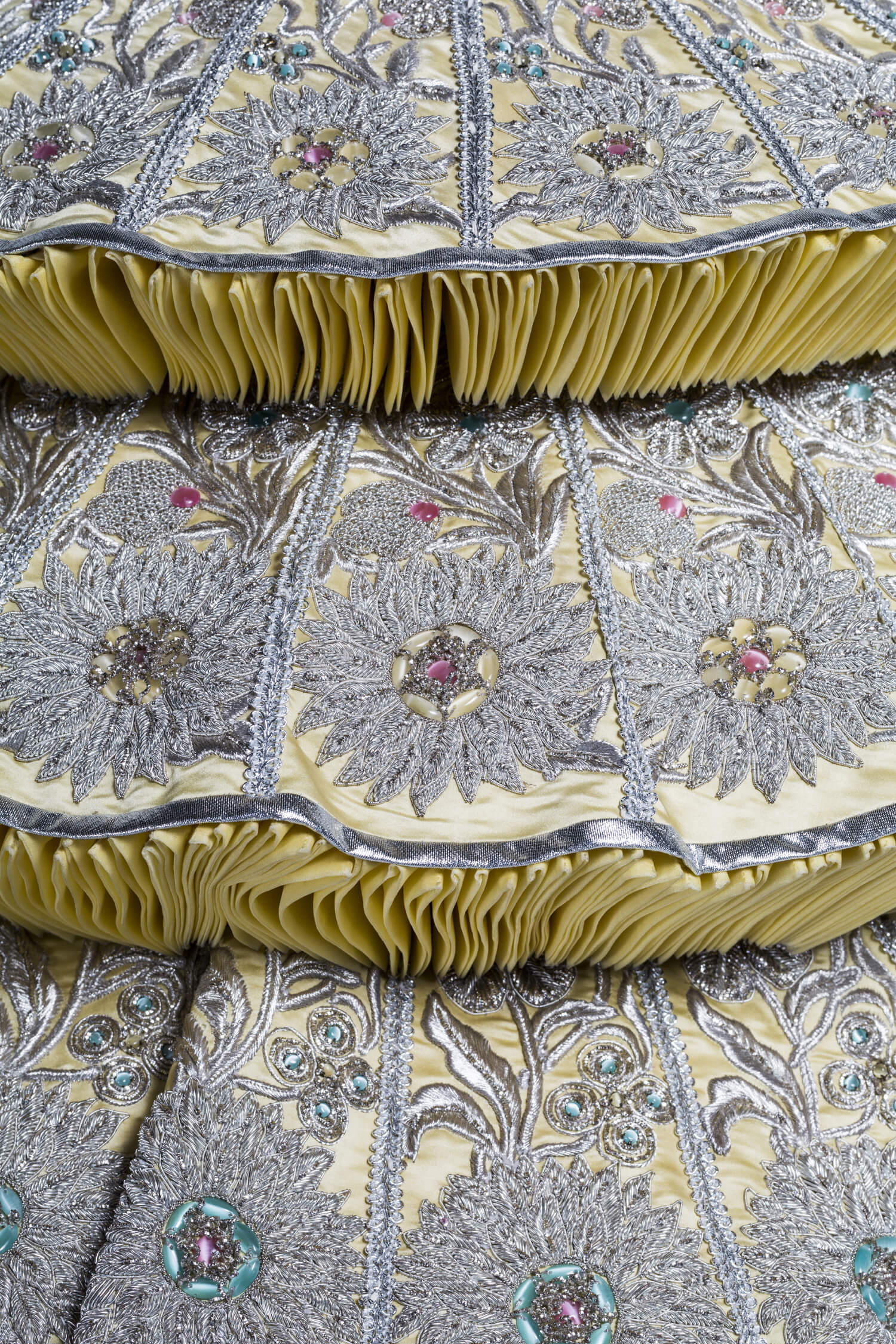
Climbing the staircase to the second floor, one reaches three private fitting rooms, each of a different size. Each room further demonstrates Guo Pei’s taste for the eclectic with giant gilt framed mirrors placed amongst Louis Quatorze style chaise longes and chairs, Chinese screens, Western art, candelabras, and mannequins wearing some of Guo’s most dramatic creations. As China’s top haute couture studio, it is here that Rose Studio's loyal customers, currently numbering more than 400, from national political figures to movie stars, celebrities, and businesswomen of the highest status, fame and wealth, come for no less than three to four fittings before purchasing the finished product which range in price from US$2000 for a traditional qipao with minimal embroidery, up to US$80,000 for an elaborate wedding dress.

Climbing a second staircase to the Studio production floor, the walls are almost completely covered in framed photographs of celebrities and models wearing Guo Pei’s creations. From the ceremonial dresses used in the 2008 Beijing Olympics to Chinese singer Song Zuying’s diamond-studded gown that she wore to perform a duet with Placido Domingo as they performed ‘The Flame of Love’, also at the Olympics; the pink taffeta column embroidered with red Chinese characters that actress Li Bingbing wore at a Venice Film Festival and numerous creations made for China’s most famous actress, Zhang Ziyi. The only person missing that would undoubtedly carry off any one of Guo Pei’s couture masterpieces is Lady Gaga. But not for lack of trying. Nicola Formichetti, Lady Gaga’s stylist, did in fact contact Guo Pei in regards to dressing the star. Four dresses together with Guo’s stilt-like shoes dutifully arrived in the U.S., but even La Gaga had to concede that she couldn’t move in them the way she needed to.
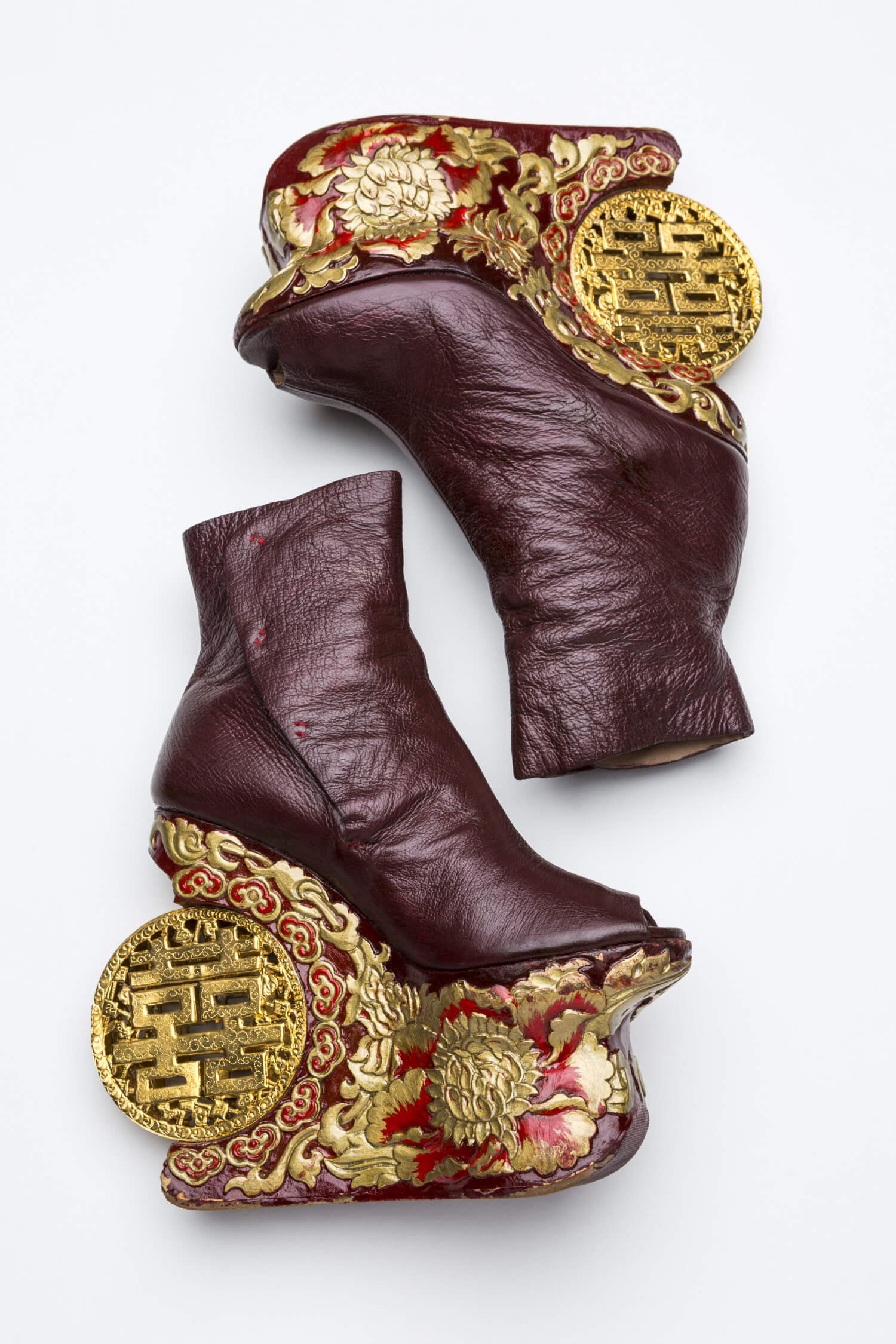
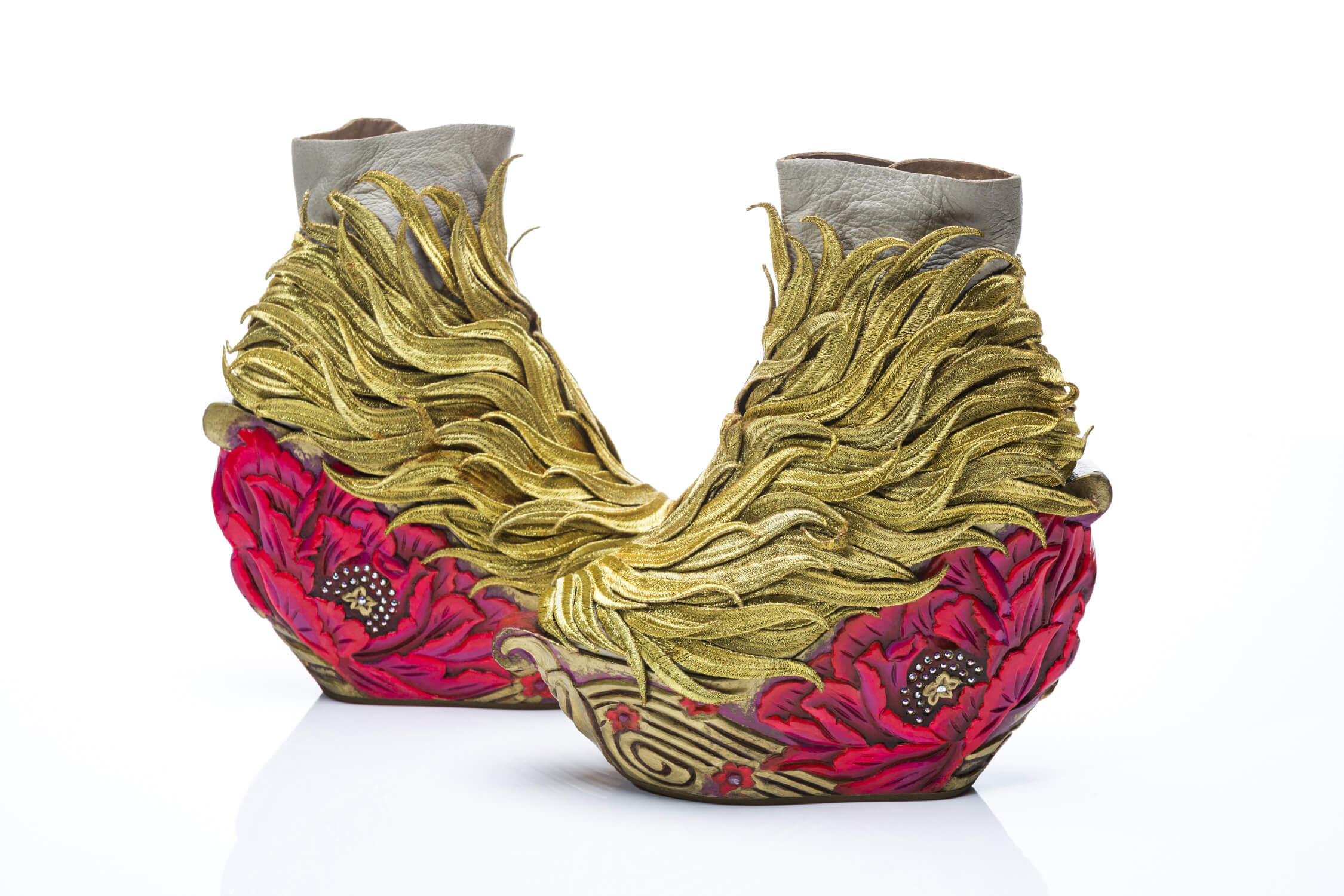
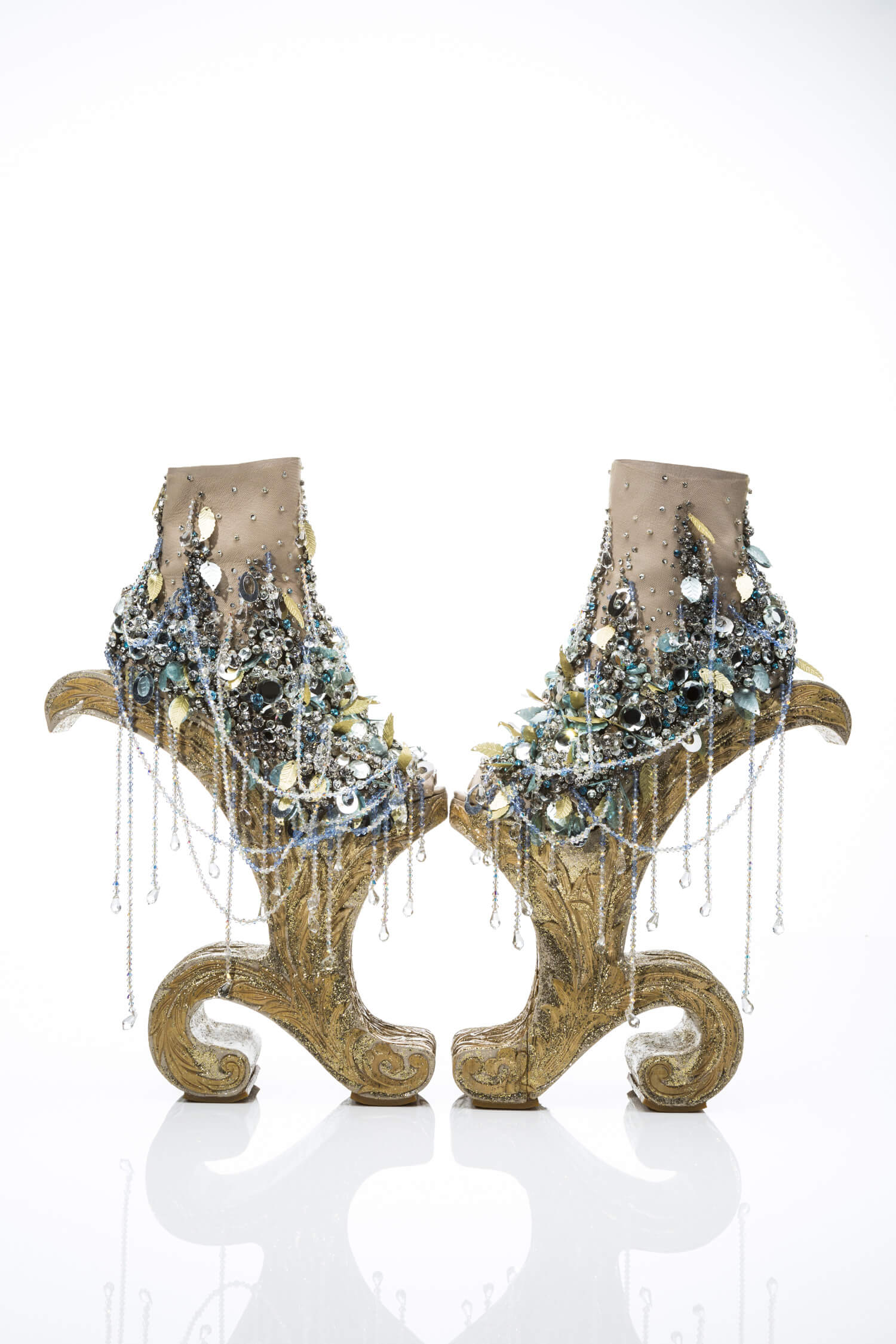
Over the three floors of Guo Pei’s atelier, more than 200 employees wearing purple tracksuit tops bearing the name ‘Rose Studio’ work relentlessly to make the designer’s clothing come to life. The pattern makers are mostly trained by Guo herself and the painstaking process of creating a piece begins with drawing a paper pattern in ink which is then translated onto a special pink fabric which forms the actual garment pattern as this is more accurate than working from a paper pattern, especially given the amount of detail involved in each piece. In the case of one particular gold dress (pictured), it took 30,000 to 40,000 working hours to complete, from pattern making through to the final embroidery embellishments. “We have more than 200 top technicians, which makes us the most advanced haute couture studio,” says Guo. “Each of them is perfect, but most started from the very beginning. If you have a passion to work in the design industry, you can still succeed without any experience or professional background. I will encourage more and more people step into Rose Studio to let them discover the joy of life, and at the same time, infuse new power into design industry.”
At one of the many workstations spread across the third floor of the Studio, a young girl laboriously cuts sequins in half, whilst another glues them one by one onto a garment using tweezers and a gas burner. In another corner, an employee carefully pins every small fold of a ruched gown to perfection, ensuring exactly the same measurement of each fold. In a small room off the main studio floor, a handful of workers undertake the making and embellishment of headpieces, fans, jewellery, accessories, and the gravity-defying shoes that have become a Guo Pei signature. The traditional embroidery techniques are done by both men and women, and a further 300 employees focus specifically on more complex embroidery in a factory in Hebei Province. Another small room is dedicated to the creation of hand-made traditional Chinese buttons.
Guo Pei cites John Galliano, Tom Ford and Valentino as designers that she admires, simply stating, “I love these masters' works!” However, there is little or no evidence whatsoever that her own designs are influenced by others. Her creations always contain Chinese elements, from embroidery to traditional patterns, but they also include modern influences, as she seamlessly combines Oriental style with Western cutting techniques.
When asked about the inspiration for her next runway show, she is somewhat elusive and clearly has the need to surprise. “We have become even more aware of ancient cultural connotations; something that we can capture inspiration and essence.”
